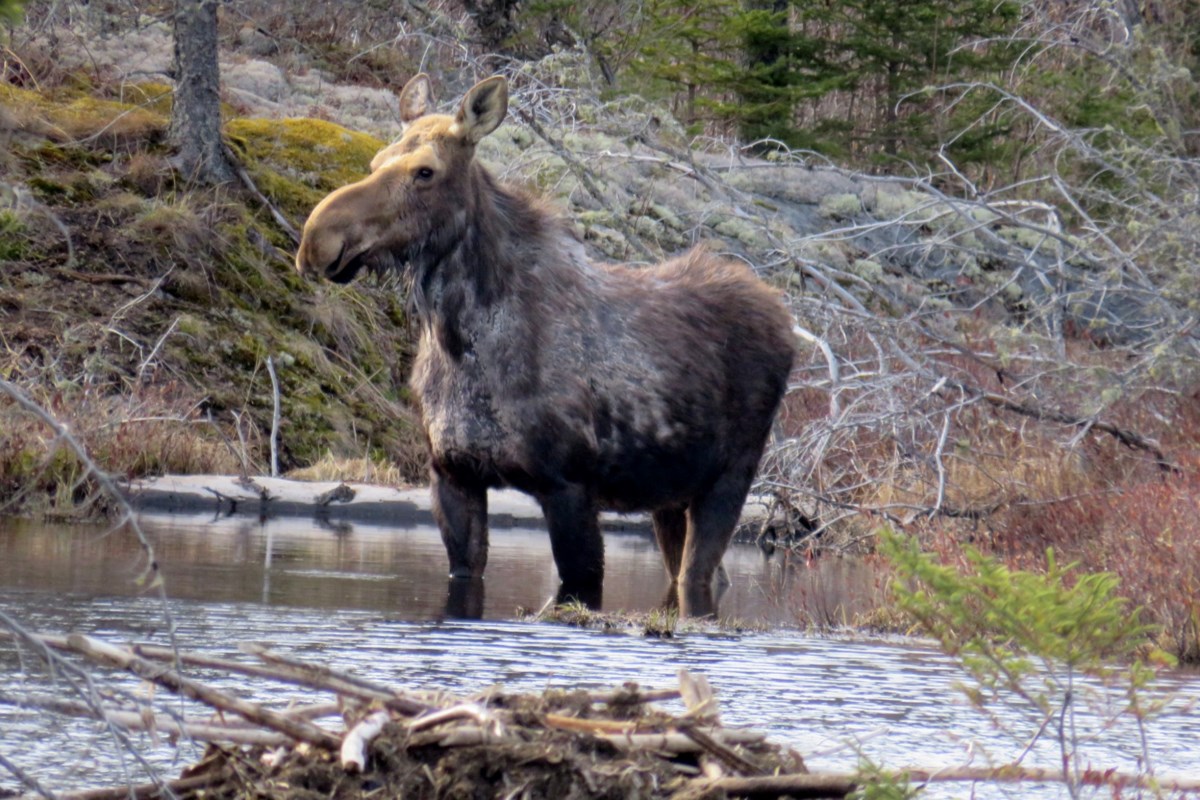One Ontario man’s fight to save the province’s moose population

Since he retired 25 years ago, Alan Bisset has been waging a one-man battle to save Ontario’s dwindling moose population and preserve moose hunting in the province using the only weapons he has in his arsenal: reams of data, decades of experience and dogged determination Sudbury.com reader Denise Kitchin spotted this moose in Chelmsford in May 2022. Sudbury.com welcomes submissions of local photography for publication with our morning greeting. Send yours to [email protected] Alan Bisset, a retired moose biologist, is fighting like hell to save Ontario’s moose population, and he’s not afraid of locking antlers to do so. “I always used to joke that I work for moose, first, the public, second, the Ministry of Natural Resources, third,” he said. “And that last one was because they paid me.” (Editor’s note: Although we would like to show you what Bisset looks like, he absolutely refused to provide a photograph.) That’s probably why he’s spent the last 25 years of his retirement fighting for the same cause that drove him through a 25-year career with the Ministry of Natural Resources: their inability, or unwillingness, he says, to "manage the resource,” a.k.a., the moose. That’s why, despite his retirement, despite the dribs and drabs of information he gets from his former employer through the use of Freedom of Information Act requests, the Strathroy resident keeps on fighting hoping they will see what the data shows him, before, as he fears, it’s too late to save the moose. “When I joined MNR, I took an oath of allegiance to the Crown. I don’t recall it being revoked on my retirement,” he wrote in an email to the MNR, in an attempt to share recommendations. “As I said, I still believe I am working on behalf of the people of the province, and trying to do it through MNR. The fault that it isn’t happening lies on your end. They deserve better.” Bisset has written some 17 columns published by Sudbury.com, filled with data-backed suggestions and explanations for bettering the moose hunt and the moose population. But if you ask him, he sometimes feels like he’s screaming into the abyss. And the ones who will suffer are his beloved moose. Described at a very basic level, Bisset maintains that the declining moose harvests are evidence of a declining population; that while many hunters unfairly criticize the point system for their lack of tags, it isn’t the real issue — bad management of a dwindling moose population is the real problem. In his own words, this is “typically the cycle that has been/is followed:” Harvest plans exceed guidelines (or reality) to ensure growth. Tags are based on past success rates. About five tags are allocated per kill. Direct control is one tag per kill. Harvest exceeds plan. Previously this led to population decline. Since 2000, harvests have fallen below planned either because plans are still excessive or because the population isn’t there to support the harvest. It’s probably both, in Bisset’s mind. Kills have declined (i.e. success rates decline.) With lower success, more tags are offered to affect the planned (over) harvest. Return to No.1. Bisset advocates for a one-tag-per-moose strategy. “I absolutely stand behind a direct and predictable harvest control strategy that uses one tag per moose,” he wrote in a column for Sudbury.com. “Rather than shortening seasons, there should be multiple seasons with individual quotas. Some could even be limited trophy hunts in the middle of the rut without jeopardizing the quality of hunting in seasons that follow,” he suggests. “Demand and allocation of harvests to different seasons should be determined by harvest assessment questions related to different season types and applications for tags,” he wrote. “I also stand behind the recommendation for a points-based tag distribution system with group applications. There will be one, relatively short and simple process.” He also suggests that rather than an April start, the MNR could potentially start with applications in July and with tags awarded by mid-August. “This change moves harvest planning until after population inventories, snow stations and harvest assessment are complete, providing a four-month window,” he wrote. If you would like a highly-specific and evidence-based look at his suggestions, you can find them here, here, here, here, and here, or try searching Alan Bisset in the search box on the Sudbury.com homepage. You can find that option here. You can find his seven-point-plan to fix the issue by clicking here. Of course, Bisset admits that he’s not the easiest person to work with: he often over-explains, offers what some say is too much information, or can be a bit terse. “In many ways I feel sorry for folks who have to work with me,” he said with a laugh. “My wife says I’m arrogant, but I don't think I am; I just think I work hard and I have developed a level of self-respect.” And respect for the work he does. Bisset said he will continue to write as long as he can, will continue to advocate for the moose he loves, ensuring that the needs of the wild population are always put first, and the needs of the public are held above that of the government. Jenny Lamothe is a reporter at Sudbury.com.


















